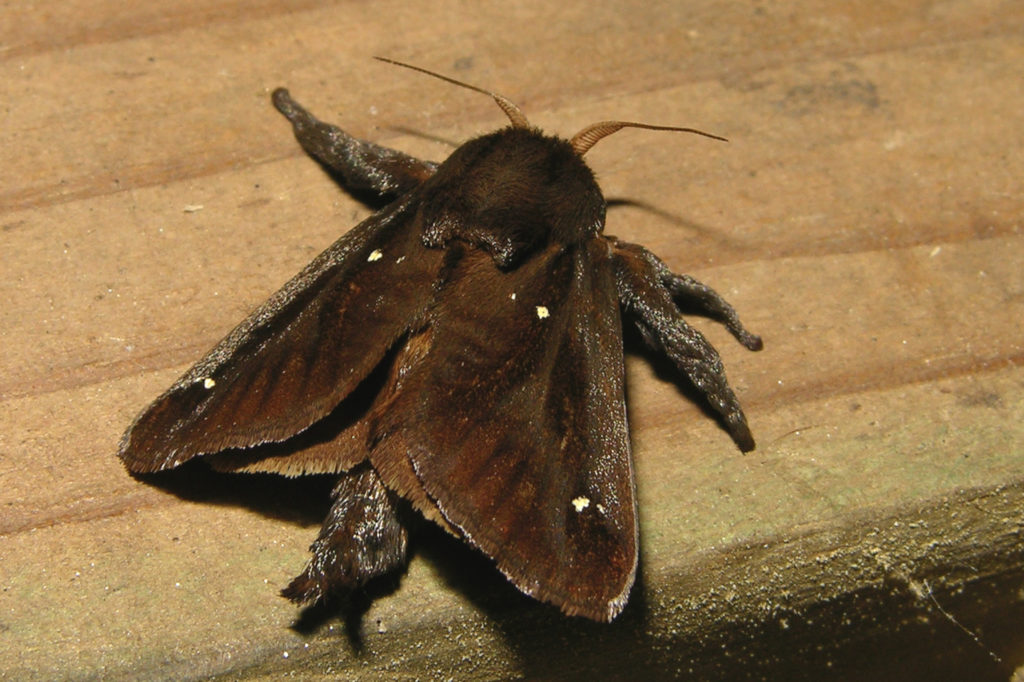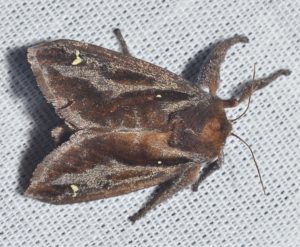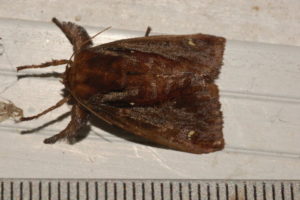Saddleback Caterpillar Moth (Acharia stimulea)
Saddleback caterpillar, as this moth is known, is the name of this species’ larva. A brown dot encircled by a white ring at the center of the caterpillar’s body replicates a saddle, resulting in its name. The moth is known to thrive throughout North America, mostly preferring warmer climates.
objects.liquidweb.services
Scientific Classification
- Family: Limacodidae
- Genus: Acharia
- Scientific Name: Acharia stimulea
Description and Identification
Caterpillar
In the first instar, they come in translucent lime green shade with black or green tentacles. Along the edges, they also have green protuberances, sans the horns that appear in their later stages. Though green or white markings are on the top of their body, the saddleback pattern is yet to develop.
During the middle instar phase, the upper part of their body attains an opaque green coloration with a black dot or saddle on the top surrounded by a white oval-shaped ring outlined in black. The green tentacles and protuberances turn orange by this time, also marked with elongated horns that can cause a stinging effect when one touches the caterpillar. Some species may even have two cream or light-green facial markings that look like two big eyes. In this period, they start eating plant tissues and grow to about .08 cm in length.
The final instar gets more vibrant with a dark purple, orange or brown color in the front and back part of their body, and bright green on the top. The saddle and the thorns get more prominent by then, and they grow to 2 cm.
Pupa
The cocoon in which the pupa remains enclosed is spherical and brown, with black veins running all over. Silken webbing developed by the stinging thorns of the caterpillar encompasses the cocoon.
Adult Moth
Sexual Dimorphism: Present
The females appear larger than the males.
Color and Appearance
Forewings: When opened, it appears dark brown with tiny white spots. When closed, the color remains the same though the white spots do not remain visible.
Hindwings: When opened, it is pale brown or creamy with two or three spots at the tip. When closed, the color and pattern remain unchanged.
Average Wingspan: 2.6 – 4.3 cm
Flight Pattern: Consistent
Season: June – July
Egg
The eggs are flat with a translucent lime green coloration laid in clusters of 30 to 50. They grow to a length of 0.15 -0.20 cm and 0.1 cm wide. Just before hatching, they become translucent yellow with a wrinkled appearance. It takes about ten days for the eggs to grow into a larva.
Quick Facts
| Distribution | Different parts of North America, including Florida, Texas, Massachusetts, Kansas, and Indiana |
| Habitat | Forest areas where their host plants grow |
| Predators | Bats, wasps, birds, mites |
| Lifespan of Adults | Not recorded |
| Host Plants | Cherry, elm, oak, plum, basswood, chestnut, maple, hackberry, spicebush, mountain coffee, grapevine, holly, sweet corn, false buckthorn |
| Adult Diet | Not recorded |
Scientific Classification
- Family: Limacodidae
- Genus: Acharia
- Scientific Name: Acharia stimulea





